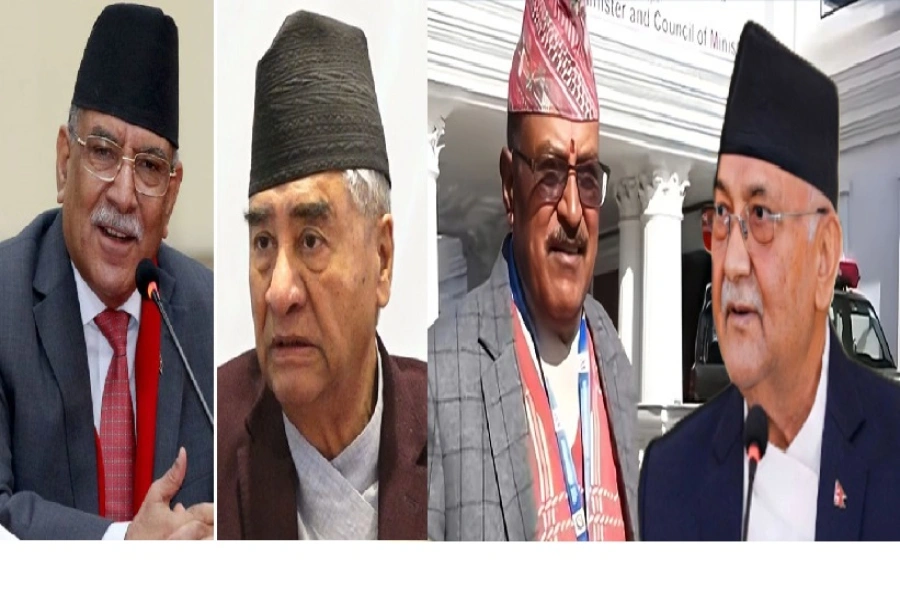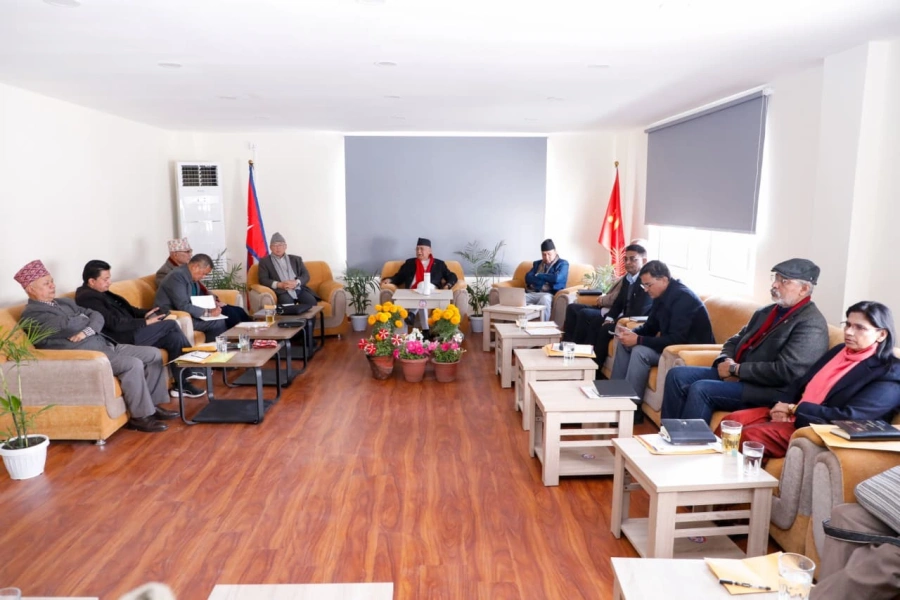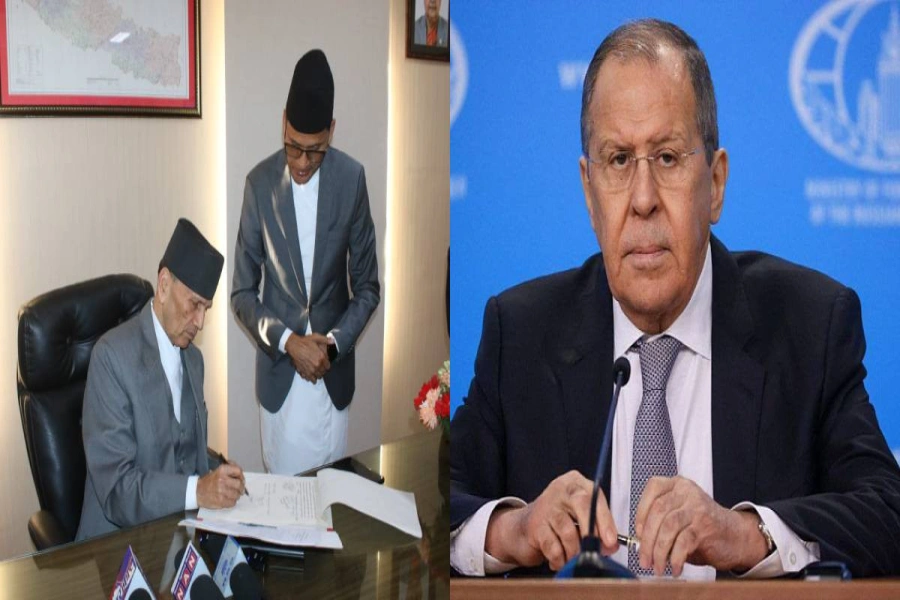As marijuana is easier to cultivate than other crops and its use is globalizing, lifting the ban will create economic opportunities for both farmers and traders.
As per the existing Narcotic Drugs (Control) Act 1976, production, sale, and consumption of marijuana is banned in Nepal. Marijuana is defined as psychoactive drug made from the dried leaves and flowers of the Cannabis plant. Cannabis is a genus of flowering plants in the family of Cannabaceae. The genus is widely accepted as being indigenous to and originating from Central Asia.
Cannabis is predominantly dioecious with staminate (male) and pistillate (female) flowers occurring on separate plants. But many monoecious varieties have also been described, in which individual plants bear both male and female flowers. Plants cultivated for fiber and seed production are described as low-intoxicant, non-drug, or fiber types. Plants cultivated for drug production are described as high-intoxicant or drug types. Cannabis grows freely in all regions of Nepal.
Where’s it used?
Cannabis is used for a wide variety of purposes. Marijuana is used for certain medical ailments, and for religious and spiritual purposes. Medical cannabis (or medical marijuana) refers to the use of cannabis and its constituent cannabinoids, in an effort to treat disease or improve symptoms. Cannabis for industrial uses is valuable in many commercial products, especially as fibre ranging from paper, cordage, construction material and textiles in general, to clothing.
Private bill at parliament to legalize marijuana farming

The importance of cannabis as a medicine for a wide array of ailments has been documented from Vedic times to modern-day research in the field of medicine. But the issue of ensuring safe access to medical marijuana to its citizens has been a challenging one. Lack of access to regulated and safe avenues for securing medical cannabis has only fostered an illicit trade. Organized criminal organizations have been the sole beneficiary of the government’s failure to regulate the cannabis market.
Hemp which is a variety of Cannabis plant that grows up to three meters tall and contains less than 0.3 percent of THC has long been used for fiber, seeds and oils. Its fiber is used to make clothing and bags. Hemp leaves are also used for vegetables. Industrial hemp products are made from cannabis plants selected to produce an abundance of fiber. In the US, "industrial hemp" is classified by the federal government as cannabis containing no more than 0.3 percent THC by dry weight. T-shirts, shawls and jackets made from the marijuana plant are attracting tourists in Kathmandu markets. Clothing and bags made from 100 percent hemp fabric can cost up to Rs10,000 depending on their design and size. Hemp fabric is stronger, more absorbent and has better insulation against heat and cold than cotton.
Although marijuana is classified as a narcotic drug, its oil is used traditionally as a muscle relaxant, the leaves are made into chutney, and it is an active ingredient in many Ayurveda products. Marijuana is smoked in hand-rolled cigarettes (joints), or in a pipe (a bong). Hashish (Charas resins from the plant flower) is mixed with tobacco and smoked or baked and eaten in foods as cookies. Hash oil is usually spread on cigarette paper and smoked. The plant also prevents soil erosion on mountain slopes because of its thick deep root system. If hemp is made legal, and allow to be grown on an industrial scale, it would contribute significantly to the Nepali economy. In fact, the then government of Nepal used to collect a significant amount of revenue from it up until the early sixties.
Nepal has a long history of the use of cannabis and marijuana has been accepted traditionally in the Nepali society. Our ancestors would use and consume marijuana to treat insomnia, body pains and boredom. But licenses of all cannabis shops, and dealers were cancelled and farmers were not allowed to grow it under pressure from the international community. This threw thousands of farmers out of work, and made impoverished western hill people even poorer.
Let’s legalize
There are no strict charges for smoking marijuana in some countries like, Spain, Czech Republic, and Portugal. It is even legalized in some states of the USA including Alaska, Colorado, Oregon, and Washington. Furthermore Uruguay and Canada have legalized cannabis for both medical and recreational purposes. The present Prime Minister of New Zealand Jacinda Ardern has recently announced parliament discussions on legalizing marijuana. Legalizing the use of marijuana by 2020 with age restriction was her election agenda.
Activists in many countries are now pushing for legalization of marijuana cultivation so that its plants can be used to make fabric and for medical use. In Nepal, the ruling Nepal Communist Party (NCP) lawmaker and former minister of Law, Justice and Parliamentary Affairs Sher Bahadur Tamang recently registered a private bill demanding commercial production of marijuana for medicinal purposes. The bill has the provision that Nepali farmers, who have their own land, should be given license to cultivate marijuana. Any Nepali citizen, who does not own land but wants to cultivate marijuana for commercial purpose, should take special permit from the government ‘board’ envisioned in the bill. As per the bill, farmers will be allowed to export the most potent part of the marijuana plant that contains the psychoactive component called tetrahydrocannabinol (THC).
There is more public support for marijuana law reform than ever before. Legal marijuana has started gaining much attention globally due to its medicinal value. This is one of the reasons that many Western countries are legalizing it. Why should Nepal still ban it? As marijuana is easier to cultivate than other crops and its use is globalizing, lifting the ban will create economic opportunities for both farmers and traders.
For Nepali farmers it can be a green gold. Nepal has a sound footing and strong advantage for growing it. Plantation of it should therefore be made legal. Cannabis is grown throughout Nepal, but mid-hills are famous for good quality products. It can be intercropped with maize if grown outdoor. It can also be grown in glass houses. But outdoor cultivation is natural and less expensive. So the programs of farming of medical marijuana and hemp need to be encouraged.
For Nepal, it is for the country’s advantage to make its cultivation, production and processing legal. It can create local employment, boost income for farmers and earn foreign currency. Various age-old researches have proved its benefits.
Let’s extensively discuss how we can make farming, production, consumption and trade of marijuana legal. A strong monitoring and regulation system is required to prevent misuse and smuggling. More research is also required to identify plants with the proper quantity of tetrahydrocannabinol (THC) before allowing commercial cultivation. It is also necessary to educate the young people against using marijuana.






































